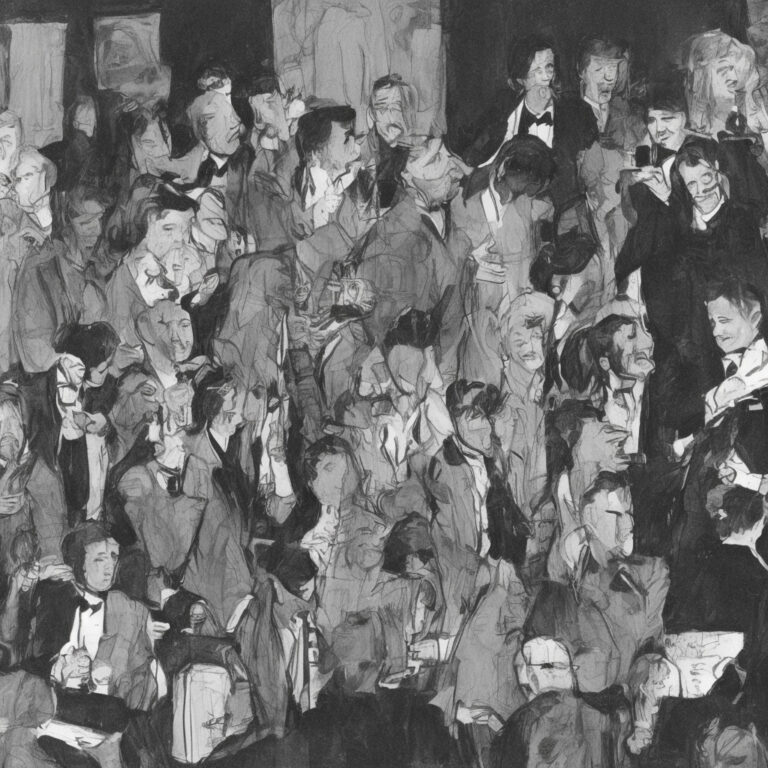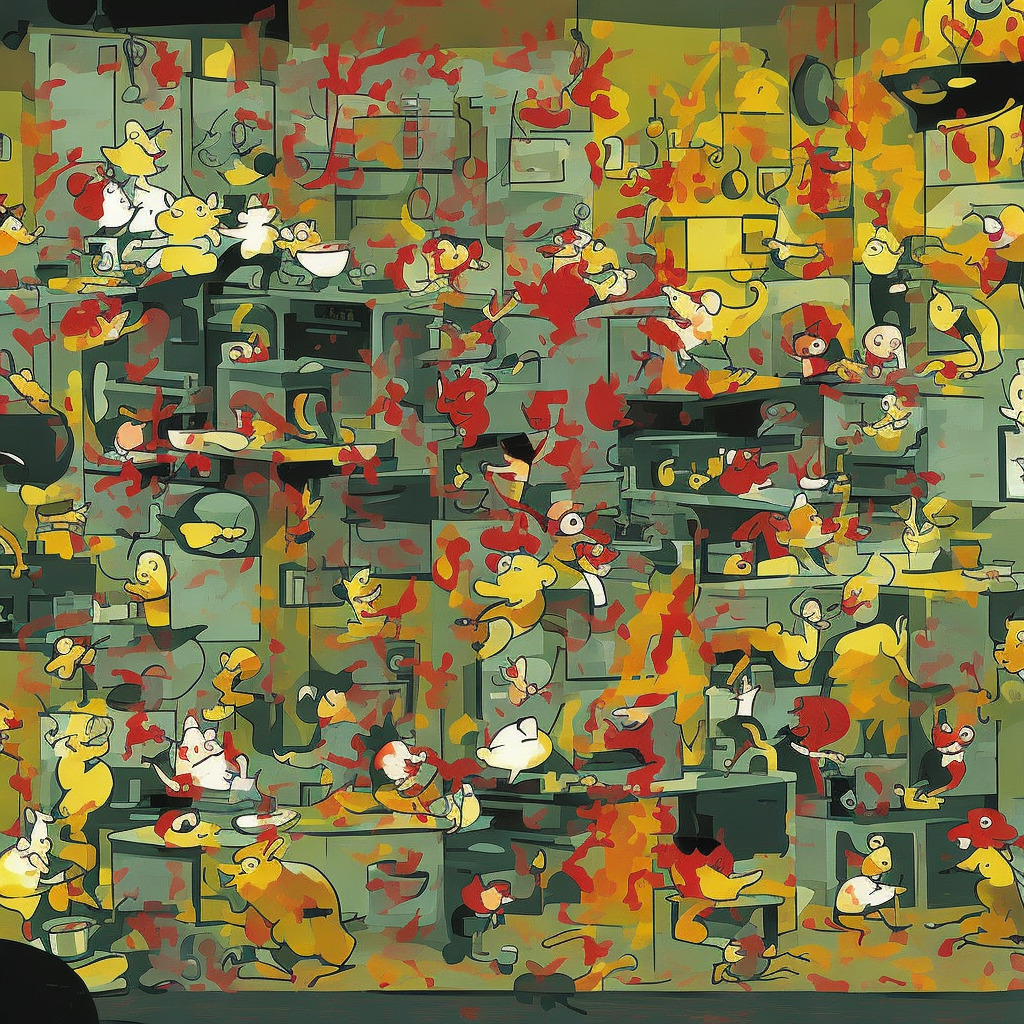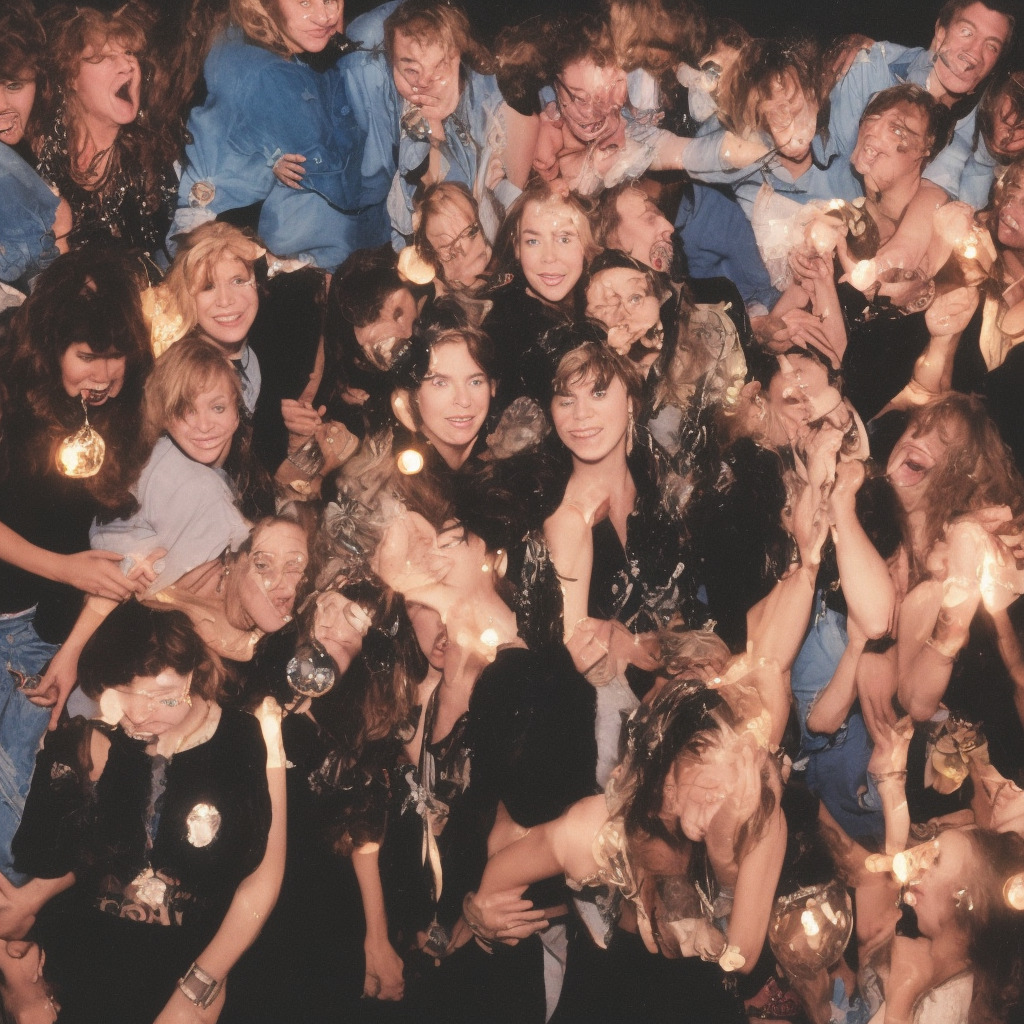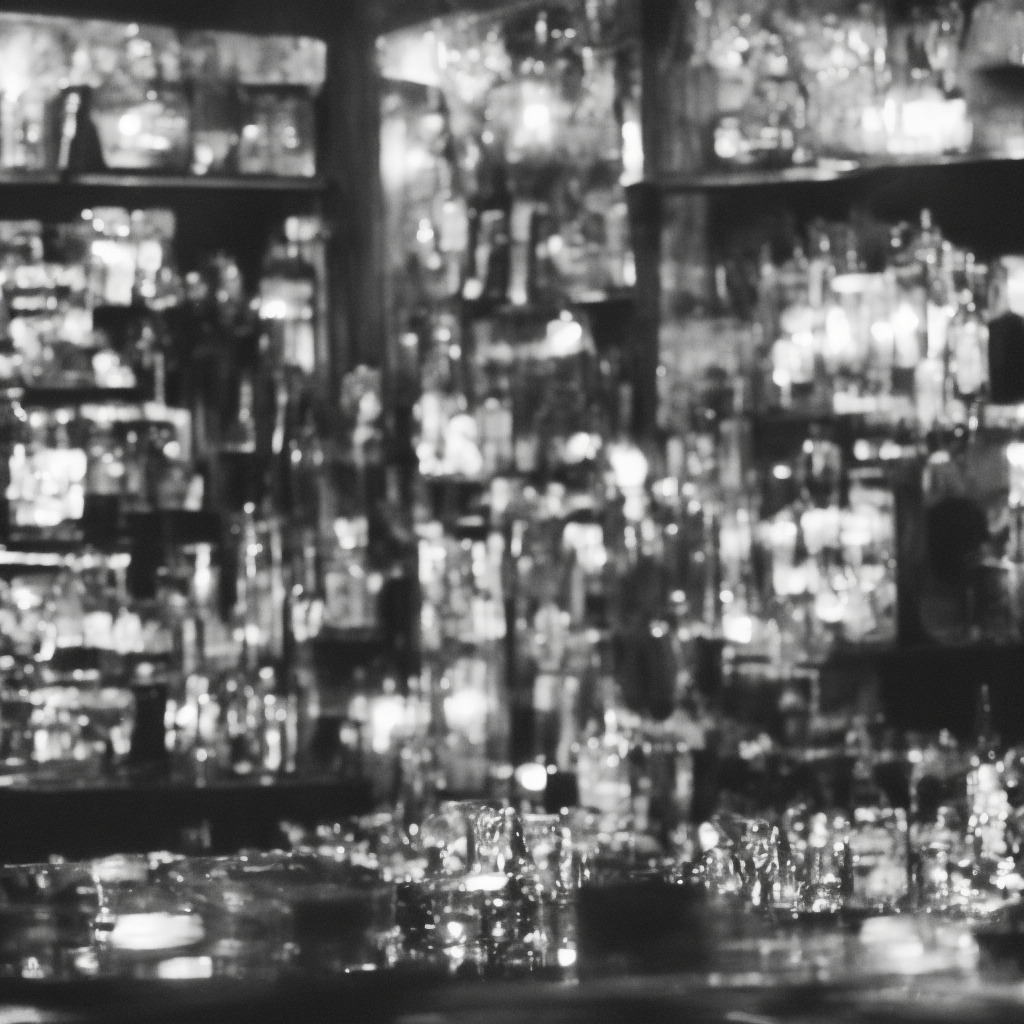🎸Did you know? “Panic” by #TheSmiths was inspired by a DJ playing Wham! after a tragic news report! 📻 “Hang the DJ” for an offbeat dance anthem 💃🕺 #MusicTrivia #80sVibes Read about it: tinyurl.com/mvepk659
Delving into the Unique Sound and Message of The Smiths
Unraveling The Smiths’ unparalleled fusion of indie rock, post-punk, and poignant lyricism that left an indelible mark on the music landscape, transcending time and controversies.

Hailing from Manchester, England, The Smiths took the music world by storm in the 1980s with their distinct sound, blending indie rock and post-punk influences. Formed in 1982, the band comprised of lead vocalist Morrissey, guitarist Johnny Marr, bassist Andy Rourke, and drummer Mike Joyce. Known for their evocative and poetic lyrics, The Smiths gained immense popularity and critical acclaim during their short-lived career, before disbanding in 1987.
One track that particularly showcases the band’s unique sound and thought-provoking messages is “Panic,” released in 1986. With an upbeat tempo and catchy chorus, this song highlights the band’s ability to intertwine pointed commentary with danceable tunes. The lyrics criticize mainstream radio stations and their propensity for airplay of superficial pop music, with the repeated refrain “Hang the DJ.” Morrissey’s signature crooning can be heard throughout the song, combining with Marr’s jangly guitar riffs to create a memorable track that has stood the test of time.
While The Smiths created a remarkable body of work during their short tenure, they were not without their controversies. Morrissey’s blunt and often politically-charged statements created rifts both inside and outside the band, ultimately leading to their split. However, the impact of their music cannot be denied. The Smiths were voted the “most influential artist ever” in a 2002 NME poll, and are often recognized for their pioneering contributions to the indie music scene.
Following the breakup of The Smiths, the members embarked on various solo projects and collaborations. Morrissey has since enjoyed a successful solo career, while Johnny Marr has worked with numerous bands, including The Cribs and Modest Mouse. The enduring legacy of The Smiths has served as an inspiration for countless bands like The Killers, Radiohead, and Oasis.
In conclusion, The Smiths were a powerful force in the 1980s music landscape, and “Panic” demonstrates their unique ability to blend memorable melodies with pointed social commentary. Despite their controversies and relatively brief existence as a band, their influence is still felt today, proving that their music remains relevant and impactful.
Charting the Course of “Panic”
“Panic” – The Smiths’ iconic hit that climbed the charts and captivated fans with its jangly guitar pop and biting social commentary.

Following its release on 21st July 1986, “Panic” made its mark on the UK music scene with its distinctive sound and thought-provoking lyrics. The song was produced by John Porter, who had worked with The Smiths on multiple occasions, and it quickly gained popularity among fans, radio stations, and music critics alike.
Upon its initial release, the single entered the UK Singles Chart at an impressive No. 31. However, it didn’t stop there. Within a few weeks, “Panic” climbed its way up the charts, eventually peaking at No. 11 on 16th August 1986, solidifying its status as one of the band’s most successful singles. To this day, it remains one of The Smiths’ highest-charting songs, alongside hits such as “This Charming Man” and “How Soon Is Now?”.
One notable piece of chart trivia is that “Panic” spent a total of seven weeks in the UK Top 40, further highlighting the song’s widespread appeal and lasting impact. Additionally, the single also performed well in Ireland, peaking at No. 8 on the Irish Singles Chart. This international success contributed to the band’s growing fame and recognition outside of their home country.
Aside from its commercial success, “Panic” also garnered considerable critical acclaim for its unique blend of jangly guitar pop and biting social commentary. It has been praised for its catchy chorus, memorable hooks, and Morrissey’s distinctive vocal delivery. Over the years, the song has been included in numerous “best of” lists and has maintained its status as an essential listen for any fan of The Smiths or alternative rock in general.
In conclusion, while the song “Panic” may not have dominated the charts, it undeniably made a lasting impact on the music scene, both in the UK and beyond. Its impressive chart performance and continued relevance among fans and critics alike serve as a testament to the enduring appeal of The Smiths’ unique brand of music.
Dissecting the Social Commentary in “Panic”
Panic on the streets of London
Panic on the streets of Birmingham
I wonder to myself
Could life ever be sane again?
The Leeds side-streets that you slip down
I wonder to myself
Hopes may rise on the Grasmere
But Honey Pie, you’re not safe here
So you run down
To the safety of the town
But there’s panic on the streets of Carlisle
Dublin, Dundee, Humberside
I wonder to myself
Burn down the disco
Hang the blessed DJ
Because the music that they constantly play
It says nothing to me about my life
Hang the blessed DJ
Because the music they constantly play
On the Leeds side-streets that you slip down
Provincial towns you jog ’round
Hang the DJ, hang the DJ, hang the DJ
Hang the DJ, hang the DJ, hang the DJ
Diving into the lyrics of “Panic” by The Smiths, it becomes clear that the song is a powerful social commentary on the state of the world, particularly during the era in which it was written. Released in 1986, the song is a reflection and response to the social, political, and economic issues of the time. The United Kingdom was facing high unemployment rates, the height of the AIDS crisis, and the lingering effects of the Cold War, among other concerns.
The lyrics express a sense of overwhelming anxiety, as the words “Panic on the streets” are repeated multiple times, emphasizing the widespread unrest and uncertainty throughout the UK. The cities mentioned in the song – London, Birmingham, Carlisle, Dublin, Dundee, and Humberside – represent various regions and communities that were all grappling with their own challenges.
One key line in the song, “Burn down the disco / Hang the blessed DJ / Because the music that they constantly play / It says nothing to me about my life,” serves as a critique of the music industry at that time, particularly the disco and pop music scenes. The Smiths argue that this music failed to address or relate to the struggles faced by everyday people. Instead, it focused on superficial and escapist themes that only served to further distance listeners from reality.
The repeated refrain “Hang the DJ” is not a literal call for violence against DJs but rather an expression of frustration with the music industry’s overall disregard for the issues that truly mattered to their audience. As listeners navigated the complex and difficult world around them, they sought meaning and connection in their art and entertainment, which The Smiths aimed to provide with their poignant and thought-provoking lyrics.
Overall, “Panic” serves as a snapshot of the turbulent times in which it was written, capturing the spirit of an era through its social commentary and unapologetic critique of the mainstream music industry. The song remains relevant today as a reminder of the importance of addressing real-world issues through art and the power that music has to connect us to our own lives and experiences.
A Visual Stroll Down “Panic” Lane
Dive into The Smiths’ gritty, nostalgic visual journey through social unrest in Derek Jarman’s iconic, avant-garde “Panic” music video.
The music video for “Panic” by The Smiths, directed by Derek Jarman, is a fascinating look into the band’s artistic vision during the height of their popularity in the mid-80s. Shot in grainy black and white, the video is a montage of various clips from vintage films, newsreels, and footage of the band performing that effectively captures the song’s themes of social unrest and dissatisfaction.
Derek Jarman, a prominent avant-garde filmmaker and artist, was well-known for his experimental and non-conventional filmmaking style. His collaboration with The Smiths for the “Panic” music video was a perfect match, as the band sought to create a visual representation that matched their unique sound and thought-provoking lyrics. Jarman’s creative vision for the video combined old footage with new, highlighting a sense of nostalgia and turmoil simultaneously.
The video features iconic clips from the 1960s, including protests and newsreels, as well as scenes from classic British and Hollywood films. Interspersed throughout the video are shots of The Smiths performing live, showcasing their electric stage presence and the charismatic persona of frontman Morrissey. The cutting and editing of these various elements creates a sense of chaos and urgency that aligns with the song’s message.
Due to its low budget, the video does not showcase any high-end production values, and the vintage film clips are grainy and at times, barely recognizable. However, this adds to the overall charm and aesthetic of the video, helping to create a raw and genuine feel that resonates with the band’s ethos.
“Panic” may not have the high production values or flashy effects typically associated with popular music videos of the era, but it stands as a testament to the power of creative vision and artistic collaboration. It remains a unique and memorable part of The Smiths’ visual legacy and is frequently featured in fan-made compilations and YouTube tributes for its distinctive style and evocative imagery. An essential viewing for any fan of the band and a fascinating snapshot of the social and cultural landscape of the time.
The Mastermind Behind “Panic”: Johnny Marr
Johnny Marr, the maestro behind “Panic,” is undeniably one of the most influential guitarists of his time. As the co-founder, guitarist, and co-songwriter of The Smiths, Marr crafted a distinctive jangle-pop sound that defined the band’s music. His innovative style of playing guitar, often employing arpeggios and intricate chord progressions, has been admired and emulated by countless musicians.
One of Marr’s other notable compositions is “How Soon Is Now?”— a hypnotic, guitar-driven anthem that has become one of The Smiths’ most iconic tracks. The song showcases Marr’s ability to create a bewitching soundscape and features what has been referred to as a “shimmering, tremolo-drenched guitar riff.” Another example of Marr’s exceptional songwriting prowess is “There Is A Light That Never Goes Out,” a tender and heartfelt ballad that demonstrates his flair for creating memorable melodies and chord progressions.
In addition to his work with The Smiths, Marr has also collaborated with a diverse range of artists, including Electronic, The The, Modest Mouse, and The Cribs. This ability to adapt his style to suit different musical genres is a testament to his versatility and genius as a songwriter and guitarist.
A Legacy of Accolades and Admiration
“Panic” by The Smiths: an enduring anthem with a legacy of accolades, inspiring covers, and cinematic cameos that continues to captivate generations.

“Panic” by The Smiths is widely regarded as one of the band’s most iconic and enduring tracks, and it has received numerous accolades and honors since its release in 1986. Although it failed to garner any awards at the time, the song’s lasting impact and popularity have only grown over the years. It has consistently featured in various best-of lists, including NME’s list of the “500 Greatest Songs of All Time” and Rolling Stone’s “100 Best Singles of the 1980s”.
The song’s infectious melody and memorable refrain, “Hang the DJ,” have made it a favorite among filmmakers, ensuring its inclusion in an array of television shows, movies, and video games. For instance, “Panic” made a memorable appearance in the television series “Black Mirror” in the episode “Hang the DJ,” a clear nod to the song’s famous line. Additionally, the track appears on the soundtrack for the 2009 film “(500) Days of Summer,” where it accompanies a pivotal montage sequence.
“Panic” has also inspired a fair share of cover versions over the years, speaking to the wide-ranging influence of The Smiths and the song itself. Notable artists that have offered their unique interpretations of the track include indie pop band Tilly and the Wall, post-punk revivalists Editors, and English electronic group Kodaline. These covers represent various reinterpretations of the original, some staying true to The Smiths’ signature sound while others venture into exciting new territory.
Beyond its accolades and appearances, “Panic” continues to resonate with fans and musicians alike, a testament to the songwriting prowess of Morrissey and Johnny Marr as well as the enduring appeal of The Smiths’ music. With its catchy tune and poignant message, “Panic” remains a classic and beloved track to this day, and its legacy shows no sign of waning anytime soon.
Dissecting the Musical Anatomy
Diving deep into the musical structure of “Panic,” we find a captivating blend of guitar-driven melodies and infectious rhythms that are quintessential to The Smiths’ sound. The song is written in the key of E Major, providing a bright and uplifting foundation for the band’s signature jangle pop style. The chord progression follows a relatively simple pattern, making use of the I-IV-V (E-A-B) structure, which is a staple in pop and rock music.
The tempo of “Panic” clocks in at around 144 beats per minute, giving the song an upbeat and energetic feel that is perfectly suited for both dancing and head-bobbing. The driving force behind this tempo is the drum pattern, which features a steady 4/4 beat punctuated by snare hits on the second and fourth beats, adding a sense of urgency to the track.
One of the standout elements of “Panic” is the masterful interplay between Johnny Marr’s lead guitar and Andy Rourke’s basslines. Marr’s guitar work in the song is characterized by jangly, arpeggiated chords that are both melodic and rhythmically intricate, while Rourke’s basslines provide a solid, pulsating foundation that anchors the song. This combination of guitar and bass creates a rich and textured sound that is instantly recognizable as The Smiths.
Another notable aspect of “Panic” is the use of vocal harmonies and layering. Morrissey’s distinctive voice is layered with backing vocals, creating a lush and full sound that complements the instrumentation. The vocal melody is primarily composed of step-wise motion, with occasional leaps that add a sense of excitement and surprise to the listening experience.
As the song progresses, the instrumentation builds, with the addition of a tambourine and piano to the mix. These subtle additions provide an extra layer of depth to the composition, enhancing the overall sonic experience. The song reaches its climax during the chorus, with all instruments and vocals coming together to create a powerful and memorable musical moment.
In summary, “Panic” is a prime example of The Smiths’ ability to fuse catchy pop melodies with intricate and innovative musical arrangements. From its infectious rhythms and mesmerizing guitar work to its lush vocal harmonies, the song serves as a testament to the band’s lasting impact on the world of music.







